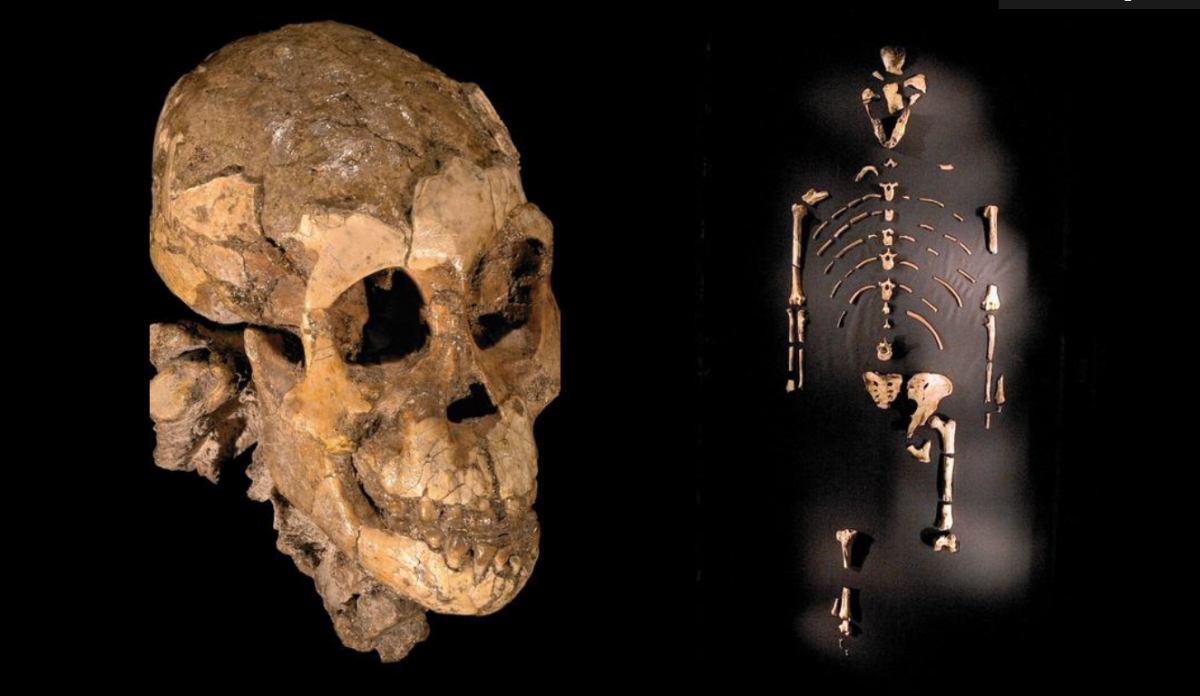Q&A: Discoverer of Lucy skeleton hopes to find what made us human

This month marks the 40th anniversary of the discovery of Lucy, the partial skeleton of an ape-like creature that walked upright 3.5 million years ago. The 1974 find would forever change humanity’s understanding of where our species came from and how Homo sapiens evolved.
Donald Johanson is the paleoanthropologist who found Lucy’s remains in the Hadar area of central Ethiopia. He and his colleagues named the fossil after the Beatles song “Lucy in the Sky With Diamonds,” which played repeatedly the night he made the discovery.
These days Johanson serves as the founding director of the Institute of Human Origins at Arizona State University. He spoke to The Times about Lucy’s impact on paleoanthropology and what he hopes to find next.
Before Lucy, what was the accepted narrative of human evolution?
In the early 1970s when I first went into the field, there was a tug-of-war going on between Europe and Africa. Most people thought our most primitive origins were in Africa, but where we really became human was Europe.
How did the discovery of Lucy change that?
She shifted, very dramatically, anthropologists’ view of where we obtained our human features. She showed us it happened in Eastern Africa, and more specifically in the Afar region of Ethiopia where she was found.
She also allowed us to say conclusively that upright walking went back as much as 3.5 million years. That was a major leap in our understanding of the sequence of events of human evolution.
How do you know she walked upright?
Because we had her pelvis. It’s a very rare discovery to find a pelvis, and hers is so strikingly different from the pelvis of a four-legged animal like a chimp. A four-legged animal has a high narrow pelvis with the hip bones facing forward. Our pelvis is squat and wide with the hip bones forming a bowl.
Lucy’s body still had relatively short legs and relatively long arms, which is the kind of anatomy we see in more tree-living or arboreal species. So she was an important bridge for us between more ancient sorts of things and more modern sorts of things.
Why was upright walking an evolutionary advantage in Lucy’s time?
Walking upright had the advantage of freeing the forelimbs from locomotor needs, allowing them to be used for other things, like carrying food back to a home base and sharing it with members of one’s own tribe or band.
We don’t know what all the benefits were, but it was obviously a major landmark breakthrough. The apes have been in decline since as long as we can remember, but there are, what, 8 billion of us today?
How has the science of human origins continued to change since Lucy’s discovery?
When I entered the field, we had maybe six or seven different Homo fossil species. Now we have 15 or 20. So what has changed is that we understand it was not a straight line from the most ancestral species to modern humans, that there were many false starts.
Are there major holes in the story of our origins that you would especially like to see filled in?
At the Institute of Human Origins we are working to answer the specific question: What are the evolutionary foundations of modern humans?
The features that distinguish us from all other animals are symbolic language, our cooperation, and a culture that allows us to make cumulative developments that no single individual could make alone. So, how did all of that come about?
Anything else?
I’d also like to know where our particular genus came from — the genus Homo. Everyone in the world is Homo sapien, but there were other, earlier Homos too. Lucy’s species, Australopithecus afarensis, died out about 3 million years ago, but the oldest Homo evidence we have is from 2.3 million years ago. That means the emergence of our own genus happened between 2.3 and 3 million years ago, and that is where people are looking.
------------
FOR THE RECORD: An article about the discovery of the partial skeleton Lucy in the Nov. 1 California section misidentified Lucy’s species as Australopithecus africanus. Her species is Australopithecus afarensis.
------------
Is there a specific geological place where you think the answer might be found?
We have people who have planned expeditions to strategically target geological strata from the 2.5- to 3-million-year period in the Afar region of Ethiopia north of where Lucy was found, and in Kenya.
These layers are devilish to work in because they don’t have many fossils in them, but they have some fossils, so there is a possibility that something can be found in there that could finally link Australopithecus with Homo.
Some people feel that the world has been picked over, and there is nothing left to discover. Do you agree?
One of the changes in paleoanthropology that is so healthy is a switch from discovery-driven to a much more introspective level of scientific research.
There are thousands of fossils in vaults throughout the world that have only been superficially studied. We can now look at trace elements and see what diets were like, or use CT scans to look at tooth formation and what it can tell us about life histories.
We also have geological deposits throughout Africa that have not been thoroughly examined and I think new discoveries will be made and be surprising.
As I tell my students, you are only limited by your imagination.
Twitter: @DeborahNetburn







